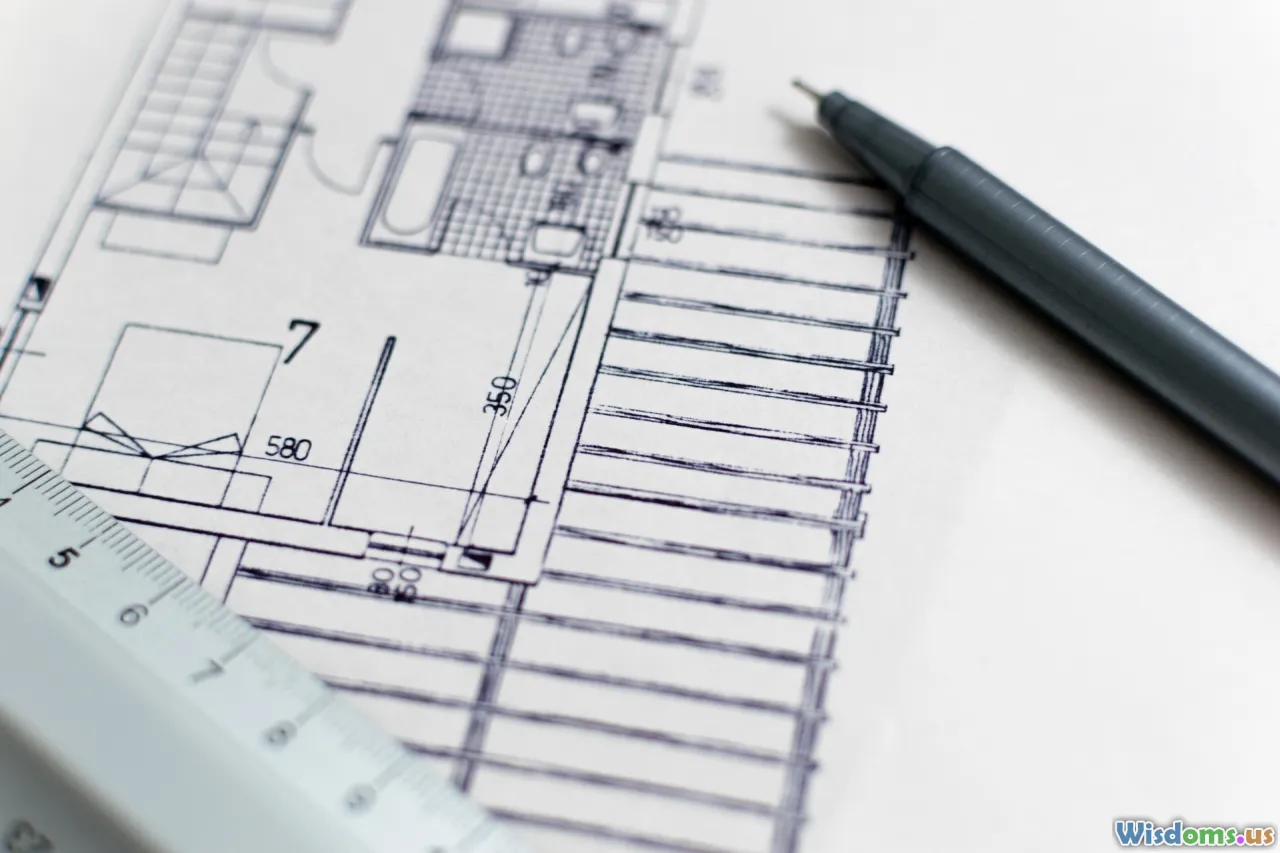
Are Modular Homes the Solution to City Housing Shortages
34 min read Explore whether modular homes can ease city housing shortages, comparing costs, speed, quality, zoning hurdles, and sustainability—with case studies, financing tips, and policy levers for scalable urban deployment. (0 Reviews)
Cities everywhere are wrestling with a paradox: demand for homes is soaring while the capacity to build them hasn’t kept pace. Land is scarce, skilled labor is stretched thin, and traditional construction’s productivity gains have been sluggish for decades. Meanwhile, residents need safe, dignified housing now—not after a multiyear slog from permitting to ribbon-cutting. In that gap, modular homes have reemerged as a serious contender. But are they the solution to city housing shortages—or just another promising idea with niche potential? The answer depends on where, how, and at what scale modular is deployed.
Below is a practical, evidence-informed exploration of modular housing: what it is, where it excels, where it falls short, and how cities and developers can use it effectively.
What We Mean by “Modular”—And What We Don’t

“Modular housing” is an umbrella term for off-site manufacturing methods that bring a significant portion of a building’s construction into a factory. The goal is to standardize repeated elements, reduce on-site complexity, and deliver a building faster and with greater quality control. Three core categories matter in cities:
- Volumetric modular: Three-dimensional boxes (modules) built and finished in a factory—often including flooring, walls, MEP (mechanical, electrical, and plumbing), bathrooms, and kitchens—then shipped to the site and craned into place. They stack like blocks.
- Panelized systems: Two-dimensional components (walls, floors, roofs) fabricated off-site and assembled on-site. Often paired with mass timber or light-gauge steel frames.
- Hybrid schemes: A mix of the two, such as a panelized structure with modular bathrooms or mechanical risers.
What modular is not: synonymous with shipping containers. Containers are designed for freight, not living. While some projects upcycle containers, most city-scale modular housing uses purpose-built modules engineered to meet building codes for fire safety, acoustics, and structural performance. The geometry, insulation, and interior finishes differ significantly from container conversions.
A second misconception: modular equals low quality. In reality, the factory setting allows consistent environmental control, precision cutting, and rigorous inspections. Many modular projects exceed code standards for airtightness and acoustics because repetitive factory processes are easier to calibrate than ad-hoc site work.
Why Cities Are Looking to Modular Now

Several structural pressures are forcing cities to consider new approaches to building:
- Persistent underbuilding: Estimates of the U.S. housing shortfall range in the millions of units. Many European and Asia-Pacific cities face similar deficits, particularly in rental-stock and entry-level segments. Chronic undersupply locks out new households, raises rent burdens, and strains social services.
- Labor constraints: Skilled trades retirements outpace new entrants in many markets. Traditional construction’s schedules balloon when crews are scarce or must juggle multiple sites.
- Site constraints: Urban infill parcels are tight, noisy neighbors demand limited working hours, and street closures are expensive. Off-site production reduces the period of heavy on-site disruption.
- Cost volatility: Weather delays, material price swings, and coordination errors compound risk. Factory production cushions some of these uncertainties through controlled environments and batch purchasing.
- Climate goals: Cities seek lower waste, reduced embodied carbon, and shorter disruptive construction windows. Modular can generate less waste and enable energy-efficient design more consistently.
The core promise of modular is not magical new materials—it’s industrialized repeatability. When a project has repeatable units—apartment stacks, hotel rooms, student housing, supportive housing—modular can capture manufacturing economies of scale that traditional methods struggle to achieve.
How Modular Changes the Cost and Schedule Math

Modular construction does not simply “make it cheaper.” It shifts where value emerges and how risk is managed. Here’s the anatomy:
Where savings can come from:
- Shorter schedules: Overlapping factory production with site preparation can reduce overall duration by 20–50% for suitable projects. A shorter build means less interest carry, faster lease-up, and earlier tax revenue for cities.
- Fewer weather delays: Factories are climate-controlled. Work that would be rained out on-site proceeds uninterrupted.
- Quality consistency: Factory assembly jigs reduce rework and punch-list churn. Fewer defects translate into lower warranty costs and faster turnover to operations.
- Waste reduction: Repetitive cutting and material optimization typically reduce construction waste substantially compared to site-built methods.
- Labor productivity: Trade specialists work in stable, ergonomic environments with standardized tools. Training is quicker, and supervision is concentrated.
Where costs can increase:
- Transport and craning: Modules are large, require escorts, and may need nighttime deliveries. Urban sites add staging complexity and crane rentals.
- Design freeze: Modular projects require earlier decisions. Late changes are costly because they ripple through factory schedules.
- Factory margin and pipeline risk: Manufacturers need steady throughput. If your project is one-off, unit pricing may reflect idle time risk.
- Redundancy/structure: Modules carry themselves; duplication of floors and ceilings can slightly reduce net floor-to-ceiling heights for a given building height, affecting cost per square foot.
Illustrative pro forma example (for understanding order of magnitude only):
- Program: 120 micro-apartments at 400 sf average net area; 60,000 gross sf including circulation and amenity.
- Traditional build: 28 months from permit to occupancy. Hard cost $350/sf = $21M. Soft costs and financing excluded for simplicity.
- Modular build: 20 months (eight months saved through parallel factory work). Hard cost $360/sf = $21.6M (assuming a modest premium for craning/transport and factory margin). Additional craning/traffic management: $500k.
- Carrying cost savings: If average outstanding capital is $15M at 6% annualized interest, eight months saved ≈ $600k interest avoided.
- Revenue acceleration: If stabilized rent averages $1,850 per unit per month, and the building opens eight months earlier, that’s roughly $1.8M in earlier revenue (120 × $1,850 × 8).
Net effect in this simplified scenario: Even with slightly higher hard costs, the schedule benefit plus earlier rent can more than offset premiums, improving project IRR. In tighter markets or with larger modules, the balance shifts—hence the need for project-specific modeling.
Key takeaway: The modular advantage often shows up in time value of money rather than only on a per-square-foot basis. Savvy developers plan financing, marketing, and lease-up to capture these gains.
Where Modular Shines in Urban Contexts

Certain building types and urban conditions are especially modular-friendly:
- Mid-rise multifamily (4–12 stories): Repetition of unit stacks and wet cores suits volumetric modules, while facades can be panelized for visual variety.
- Student and workforce housing: High repeatability and standardized room layouts. Universities also value compressed delivery between academic years.
- Supportive and transitional housing: Cities can deploy multiple similar buildings across different sites, bundling orders to keep factories running and costs predictable.
- Hospitality: Hotel rooms are the quintessential repeatable module. Conversions to extended-stay formats also align well with modular bathrooms and kitchens.
- Accessory dwelling units (ADUs): Backyard or small-lot ADUs benefit from pre-approved designs and plug-and-play services, especially in cities with ADU-friendly zoning.
- Rooftop and overbuilds: Light-gauge steel or mass-timber modules can add stories atop existing structures with minimal disruption at street level, provided structural capacity and codes permit.
- Tight infill sites: Shorter on-site durations and fewer deliveries reduce neighbor impacts and street closures.
A common pattern across successful city deployments: many similar buildings, not just one. Bundling helps factories plan labor, procure materials in volume, and quote sharper pricing.
Real-World Signals: What We’ve Learned from Early Adopters

- Singapore’s PPVC push: Singapore encouraged Prefabricated Prefinished Volumetric Construction (PPVC) for selected building types. Reported results include shorter construction times and improved site safety and cleanliness. The city-state’s consistent pipeline and clear standards (including QA requirements for manufacturers) underpinned success.
- Vancouver’s rapid supportive housing: The city commissioned multiple modular supportive housing buildings on public land, delivering hundreds of units in months rather than years. The approach focused on livable studios with on-site services, prioritizing speed without sacrificing basic quality. Lessons: standardized designs and a rolling program matter.
- Sweden’s industrialized housing: Nordic builders have decades of experience with panelized and volumetric systems for mid-rise apartments. Long-term factory investment, standardized grids, and strong logistics planning enable cost and schedule predictability in challenging climates.
- New York’s early high-rise experiment: An early modular high-rise faced delays and legal disputes, leading skeptics to declare modular a dead end. But subsequent mid-rise and hybrid projects have shown steadier performance. The lesson isn’t that modular fails at height; it’s that it demands tight integration, reliable supply chains, and realistic logistics for dense urban cores.
- UK modern methods of construction (MMC): The UK has formalized categories for off-site methods, with insurers and warranty providers developing specific standards. Success has clustered in student housing and rental blocks, where repeated typologies thrive.
The thread: modular thrives where policy signals are clear, pipelines are predictable, and projects are designed for manufacturing from day one.
The Constraints You Must Respect

Modular is not a cure-all. Typical friction points include:
- Logistics: Modules are big. Urban streets may require nighttime deliveries, police escorts, and staged road closures. If staging areas are limited, crane time balloons and neighbors complain.
- Regulatory approvals: Modular elements often require state or third-party factory approvals plus local building permits. If agencies aren’t aligned on inspection protocols, schedule gains evaporate.
- Design freeze discipline: Last-minute architectural tweaks are expensive. Teams must commit earlier and coordinate details at manufacturing tolerances, not just schematic intent.
- Lender comfort: Appraisers may struggle to value modular when comps are scarce. Lenders may require special bonding, stored-materials insurance, and step-in rights for unshipped modules.
- Factory capacity risk: A plant going idle or overbooked can derail timelines. Vet financial health and contingency plans.
- Acoustic and fire separations: Modules can excel here, but only if early detailing addresses inter-module joints, flanking paths, and chases.
- Structural limits: High-rise volumetric is possible but uncommon due to stacking tolerances, transport envelope limits, and elevator/egress complexity. Hybrid systems can be better for taller buildings.
Risk checklist for urban modular:
- Do early route surveys for module deliveries and confirm crane pad feasibility.
- Secure agency alignment on factory inspections and on-site approvals before shop drawings.
- Freeze unit layouts early; limit customization to facade and public spaces.
- Develop an escalation plan for late design changes; know which modules can be reworked without cascading reengineering.
- Confirm manufacturer’s pipeline and workforce; request past schedule performance data.
- Contract for mock-up modules to validate finishes, tolerances, and MEP interfaces before mass production.
Policy Levers That Make Modular Work at Scale

Cities cannot simply “permit modular” and hope for the best. They must shape the market to reward speed and quality:
- Pre-approved design catalogs: Offer a pattern book of compliant unit types and facades (including accessibility variants). Projects that adopt these templates get expedited reviews.
- Modular-ready codes and inspection pathways: Define who inspects factory-built components, when, and how reports are shared. Use third-party quality auditors recognized by the building department.
- Bundled procurement: Package multiple smaller sites into one program so manufacturers can commit pricing based on volume. This also smooths factory throughput and labor scheduling.
- Performance-based incentives: Offer fee reductions or tax abatements for projects that meet measurable timelines, energy performance, and affordability targets.
- Public land and right-of-way coordination: Provide staging areas or temporary street occupancy permits at predictable costs. The ability to stage near site can make or break modular economics.
- Finance enablement: Partner with mission-driven lenders to create modular-friendly loan products that recognize earlier revenue and stored-material collateral.
- Workforce development: Invest in factory and on-site assembly skills training, aligning community colleges with manufacturers.
- Standard utility interfaces: Work with utilities to standardize meter banks, service laterals, and connection details that match modular cadence.
Developer Playbook: How to Deliver a Modular Project That Works

- Start with DfMA (Design for Manufacturing and Assembly):
- Lock module widths to transport limits (commonly 12–14 feet without escorts; check local regs). Consider corner-turns and bridge clearances along the route.
- Align structural grids to reduce shims and on-site adjustments.
- Standardize wet walls and vertical risers. Keep kitchens and baths stacked.
- Choose the right system for the job:
- Volumetric for high repetition (micro-units, student housing, hotels).
- Panelized or hybrid for larger unit variety or taller buildings.
- Prefabricated bathroom pods for conventional builds that need only partial off-site benefits.
- Integrate the manufacturer early:
- Avoid design-bid-build. Use design-build or early contractor involvement so shop drawings drive architecture—not the other way around.
- Conduct a factory audit: throughput, QA processes, tolerance documentation, and mock-up capacity.
- Plan the site like a choreography:
- Complete foundations and cores while modules are in production. Sequence deliveries to minimize on-site dwell time.
- Book cranes early. A single scheduling miss can idle an entire crew.
- Secure neighborhood communication: share the crane schedule and delivery windows; provide real-time updates.
- Engineer connections with intent:
- Detail inter-module joints for acoustics and fire. Pre-compress gaskets, double-check sealants, and specify resilient channels where needed.
- Test MEP plug connections with sample modules before mass run.
- Contracting and warranties:
- Define responsibilities for damage in transit, storage, and craning.
- Require traceability: each module’s serial number linked to QA records.
- Specify performance warranties for building envelope and MEP systems, not just product warranties.
- Preserve design quality:
- Facades can be modularized without monotony. Mix panel textures, colors, and module depths.
- Prioritize ground-floor activation with site-built flexibility: retail bays, community rooms, and lobbies can be more bespoke.
Financing and Insurance: Getting the Capital Stack Comfortable

- Appraisal and comps: Educate appraisers on performance, not just comps. Provide rent-up speed assumptions backed by similar modular projects.
- Stored materials and off-site collateral: Lenders often require special agreements to recognize partially completed modules as collateral. Arrange inspection protocols and title to materials as they progress through the factory.
- Payment milestones: Tie payments to factory QA checkpoints plus third-party audits. Avoid front-loading cash to the point where the developer bears factory failure risk.
- Step-in rights: If the manufacturer falters, the developer or lender needs rights to designs, jigs, and work-in-progress modules.
- Insurance: Confirm coverage gaps for transport, craning, and staging. Put responsibility clearly in the contract, with deductibles and thresholds specified.
- Surety bonds and parent guarantees: Evaluate manufacturer financials, then size bonding appropriately. For large programs, consider multi-project framework agreements.
Sustainability and Resilience: More Than a Nice-to-Have

- Waste: Factories target material yields precisely, often cutting waste substantially compared to on-site methods. Offcuts can be reused across projects, and storage keeps materials dry and undamaged.
- Operational energy: Tight factory-built envelopes and consistent detailing help achieve better airtightness and reduce thermal bridging. Pair with heat pumps and balanced ventilation for lower energy bills.
- Embodied carbon: Standardized designs make it easier to specify lower-carbon materials (e.g., cement substitutes, mass timber, recycled steel) and to track impacts across batches.
- Site disruption: Fewer deliveries and shorter site time mean less dust, noise, and traffic—healthier for neighboring residents and small businesses.
- Resilience: Modules can be engineered for seismic and wind loads by design, with predictable interconnections and repeatable testing. In disaster recovery, factories can ramp up production faster than dispersed site crews.
- End-of-life and adaptability: Modular components can be disassembled, relocated, or upgraded more readily than monolithic builds, extending building lifecycles and supporting circularity.
Modular vs. Other Housing Solutions: How It Stacks Up

- Zoning reform and upzoning: Increasing allowable density without improving delivery methods can still leave cities waiting years. Modular complements zoning reform by shortening realization time.
- Adaptive reuse: Converting offices or hotels into housing addresses location and embodied carbon, but floorplate depths and core positions can complicate layouts. Modular bathroom pods can streamline repetitive retrofits, while full volumetric modules are usually better suited to ground-up work.
- ADUs: Prefab ADUs are among the fastest ways to add gentle density in low-rise neighborhoods. Standardized utility connections and pre-approved plans amplify the benefit.
- Mass timber and panelized systems: These can be modular or near-modular, offering speed and carbon advantages. Panelized mass timber excels for mid-rise with varied unit types.
- 3D printing: Promising for small, low-rise structures where site logistics are simpler. For dense mid-rise urban housing, 3D printing is not yet a mainstream answer.
Bottom line: Modular is a delivery method, not a zoning policy or a subsidy. Cities that treat it as one of several complementary tools—alongside land policy, finance, and regulatory reform—see the best results.
Capacity and Scaling: How Many Homes Can Modular Really Deliver?

Factories are capital-intensive operations that need predictable throughput. Typical ranges:
- A single volumetric factory might produce 1,000–3,000 modules per year depending on shifts and complexity.
- If an average city apartment requires 2–4 modules, that’s roughly 250–1,500 units per factory annually.
- Lead times vary: 4–8 months from order to first delivery is common once designs are frozen.
Scaling implications:
- Pipeline matters: A city that bundles 10–20 similar projects over three years can justify one or more dedicated lines at a factory, with better pricing and surety.
- Standardization lifts capacity: Revising designs per project burns factory hours. Sticking to a limited set of module types accelerates throughput.
- Multi-sourcing: Diversify across two or three manufacturers to reduce single-point failure risk.
- Training and automation: As volume grows, factories invest in robotics for cutting, painting, and repetitive fastening—improving consistency and speed.
This capacity math demonstrates potential: modular can add thousands of units annually in a large metro if the pipeline is curated. It won’t single-handedly erase a multi-hundred-thousand-unit deficit, but it can become a meaningful share of annual additions.
A Practical City Roadmap to Modular at Scale

- Map sites and bundle: Identify a dozen public or partner-owned parcels near transit. Cluster them into 3–4 tranches by similar height and footprint.
- Publish performance specs: Define unit mixes, accessibility standards, energy targets, and facade parameters—not prescriptive floor plans. Invite manufacturers to propose compliant alternatives.
- Launch a design-manufacturer bench: Prequalify 3–5 teams for a multi-year program. Commit to volume targets if milestones are met.
- Create a modular permit lane: Train reviewers in factory documentation. Accept third-party plant inspections and focus local checks on foundations, assembly, and final occupancy.
- Stand up financing supports: Provide partial guarantees or revolving credit for stored materials and in-factory work to smooth cashflow.
- Pilot and iterate: Start with supportive or student housing to prove timelines. Apply lessons to larger mixed-income projects.
- Measure outcomes: Track schedule days saved, cost per livable square foot, tenant satisfaction, energy use, and warranty issues. Use data to refine standards.
Project-Level Tips and Tactics

- Early clashes are cheaper than late fixes: Run factory-level BIM with manufacturing tolerances, not just conceptual models. Simulate crane picks and staging.
- Limit module SKUs: Fewer unit types reduce changeovers in the factory. Aim for three to five module variants covering most layouts.
- Pre-test MEP riser alignment: Build a full-height mock-up of stacked modules with connected risers to validate tolerances before mass production.
- Design for maintainability: Use access panels and standardized parts for in-unit equipment. Supply O&M manuals that match the actual installed SKUs.
- Envelope strategy: Consider factory-built facade panels to eliminate scaffolding time and improve airtightness. Integrate window installation in the factory where feasible.
- Neighbor management: Share a delivery calendar, hotline, and noise schedule with adjacent buildings. Peace of mind reduces complaints and enforcement delays.
Is Modular Right for Your Project? A Quick Diagnostic

Score each item 0–2 (0=no, 1=maybe, 2=yes):
- Unit repetition: Are 70%+ of units variants of the same layout?
- Height: Is your building mid-rise (4–12 stories) or suited to low- to mid-rise stacking?
- Site logistics: Is there space for a crane pad and module staging, or reliable just-in-time delivery options?
- Program timeline: Does shaving 20–40% off the schedule materially improve project viability (e.g., financing deadlines, student intake dates)?
- Design discipline: Can you freeze key decisions early and live with limited customization?
- Policy environment: Does your city have clear modular inspection pathways and willingness to streamline permits?
- Pipeline: Can you bundle with other projects or phases to offer volume to manufacturers?
If you score 10 or higher, modular is a strong candidate. Scores 6–9 suggest exploring hybrid or panelized approaches. Below 6, conventional methods may be more efficient unless policy or logistical changes are made.
Common Objections—and Practical Responses

-
“Modular looks cheap.” Response: Facade quality is a design choice, not a modular constraint. Use panelized facades with depth, varied textures, and robust ground-floor treatments. Require mock-ups to set expectations.
-
“What about durability?” Response: Modules are engineered to survive transport loads more severe than in-place loads, often resulting in robust frames. Specify materials and warranties comparable to conventional builds.
-
“We’ll lose flexibility.” Response: Standardize where it counts (unit wet areas), customize where it shows (facades, lobbies, amenity spaces). Hybrid systems allow larger living areas without giving up factory benefits.
-
“We can’t finance it.” Response: Create lender education packets, secure modular-savvy third-party inspections, and set payment milestones aligned to QA stages. Partner with lenders who recognize earlier revenue.
-
“Local jobs will suffer.” Response: Factories create stable, year-round jobs and training pathways. On-site assembly and finishing still require local trades. Cities can require local hiring for both factory and field roles.
A Balanced Answer to the Big Question

Are modular homes the solution to city housing shortages? They are a solution—powerful in the right contexts, insufficient alone. Modular excels when cities and developers harness repeatability, align policy and finance, and manage logistics with precision. It turns time into the primary source of value, shrinking the window between capital deployment and occupancy. For students needing dorms in the next academic year, for residents moving from the street into supportive housing, for growing workforces seeking attainable rents near transit—that time shift changes lives.
But modular won’t fix restrictive zoning, replace public investment in affordability, or single-handedly produce the tens of thousands of units some metros need annually. Nor is it a fit for every site or design ambition. It is a method that rewards discipline, scale, and collaboration.
If you’re a city leader, your best move is to declare a modular-friendly lane: predictable approvals, bundled procurement, and clear performance goals. If you’re a developer, pick projects with repetition, lock decisions early, and partner deeply with manufacturers. And if you’re a community member, judge modular not by outdated stereotypes but by the quality of the homes, the speed of delivery, and the stability it offers your neighbors.
Used thoughtfully, modular can shift the housing curve in the near term—delivering thousands of dignified, efficient urban homes faster, with less waste and disruption. That won’t end the housing shortage overnight, but it can give cities a fighting chance to catch up and keep up.
Architecture & Urban Design Urban Planning Affordable Housing Architectural Innovation Case Studies Real Estate Development Construction & Engineering modular homes urban housing shortage prefabricated construction affordable housing policy zoning and permitting multifamily development off-site manufacturing construction finance sustainability in construction
Rate the Post
User Reviews
Popular Posts
















